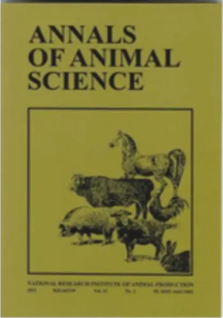Document type : news item from the INRAE website
Author: INRAE
Preview: Organic farmers aim to achieve a high level of animal welfare. To reach this goal in pig farming, one of the crucial steps would be to bring an end to the castration of male piglets. INRAE and the pig industry are working to improve the rearing and processing of whole males.
Greater expectations of animal welfare from the general public are driving practice towards an end to the castration of male piglets. The ban on live castration of piglets in France from 2022 is part of this objective. Although piglets have been castrated until now, this is mainly to meet expectations concerning meat quality. Some carcasses and meat from uncastrated male pigs give off unpleasant odours and flavours that could lead to their rejection by consumers. This risk is controlled in conventional production even if it is not completely eliminated. Organic farming calls for other adaptive measures because of its specific husbandry practices, in particular longer growth periods and different livestock conditions with more space and bedding.
Two research programmes are underway to support organic producers through changes to their practices and to ensure that they have outlets for their products. The Farinelli project, supported by Casdar funding, focuses on pain management during castration and on livestock practices that reduce the risk of unpleasant odours in the meat of non-castrated male pigs and enhance the value of meat produced under conditions that are good for farmers and consumers. The European PPILOW programme focuses on improving the welfare of pigs and poultry in organic systems, including the rearing conditions of uncastrated male pigs in order to limit undesirable behaviours (mounting, aggression) and reduce the risk of odours in their meat.
Adapting transformation
In conventional farming, around 5% of uncastrated male pig carcasses display boar taint but this rate is highly variable. Work is underway to quantify its occurrence in organic farming. The two main molecules that cause odour risk, androsterone and scatol, are mainly found in fatty tissue. "We know that a third molecule, indole, is also involved, but to a lesser extent because its odour intensity is 50 times less," says Armelle Prunier, from the PEGASE MRU. Odour problems are mainly noticed during the cooking of meat that contains fat (lardons or fresh sausage for example). Tests have been carried out to establish whether it is possible to incorporate meat from uncastrated males into processed products without any undesirable odours being discernible. In addition to the management of odorous carcasses, rearing uncastrated male pigs means that processing techniques must be adapted because their morphology is different from that of castrated males, producing carcasses that are less fatty with larger shoulders but smaller hams.
Reducing the risk of odours
Various avenues are being explored to reduce the odorous compound content of the fat. "To reduce scatol content, the main levers lie in the control of farming conditions: hygiene, ventilation and ambient temperature, as well as feed. For androsterone, the major levers are in an animal's genetics, as well as its age and weight at slaughter. Slaughtering animals at a younger age and that are therefore lighter will reduce the risk," explains Armelle Prunier. Farmers will also have to make changes to their feed. Adding targeted fermented fibres or feeds such as raw starch, chicory or lupin would be beneficial. "To limit the risk of odours, we are carrying out trials on the addition of fodder and fibre," adds Bénédicte Lebret, another INRAE researcher at the PEGASE MRU. "These foods increase the level of satiety, promote the expression of exploratory behaviour and reduce the risk of gastric ulcers. All of this contributes to welfare, as well as improving the sensory quality of the meat by limiting the production of scatol."
For their part, breeders are working to breed boars with a low risk of odour. Some bloodlines, such as the Pietrain breed for example, appear to be less at risk.





